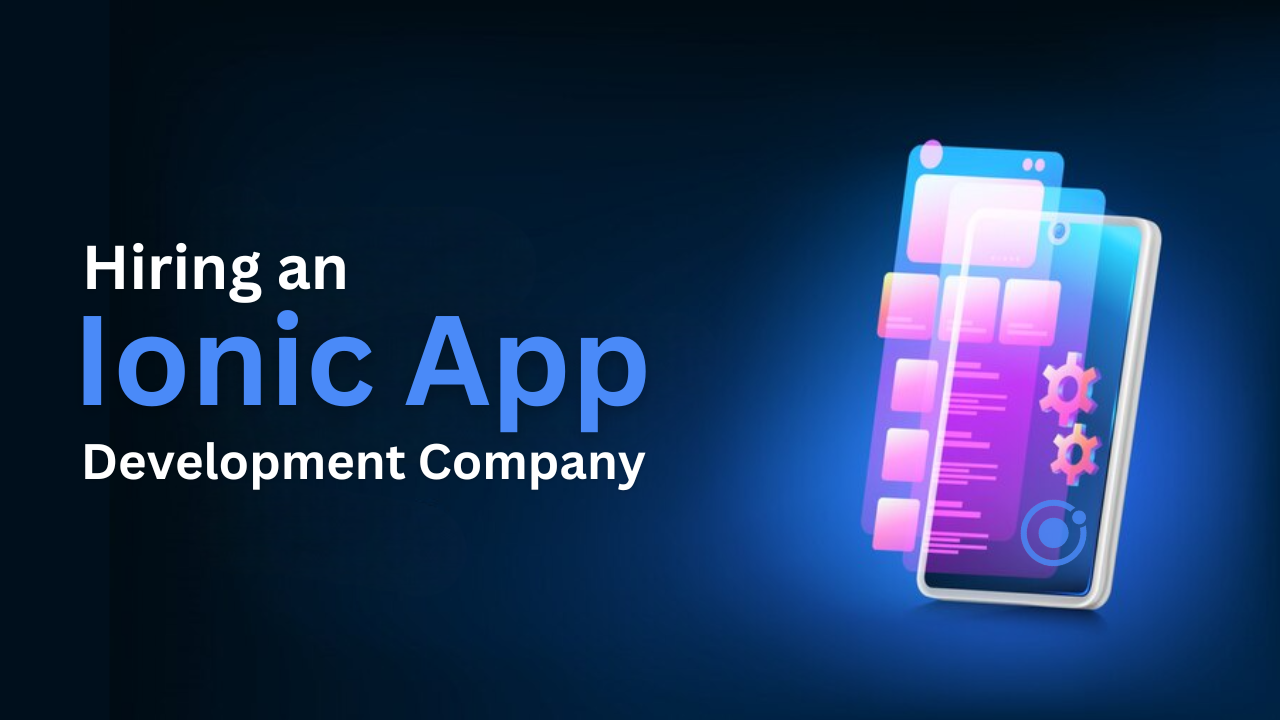What is common between – Sworkit, Shipt, Untappd, Sanvello, Flixster, Fitbit, Untappd, and Costco? They are all made with Ionic, and work seamlessly across OS!
Not very long back, but 13 is a substantial number of years that made Ionic, an open-source SDK, to look as it is today. It works across platforms and is open source so developers can contribute as and when they have input. Ionic app development saves time, resources, and effort so resultant apps are highly performant.
What Is It?
Ionic App Development Framework focuses on web technologies like HTML, CSS, and JavaScript; however, it might face competition from frameworks like React Native for performance-critical applications due to its hybrid nature which can sometimes result in slightly slower performance compared to native rendering. Ionic is suitable for projects where rapid development and a user-friendly UI are key considerations, but developers should also evaluate other options based on specific project needs, especially when performance is a critical factor.
Ionic is a set of pre-built user interface components and tools that developers can freely access and use to create mobile applications that run smoothly on both Apple (iOS) and Google (Android) devices, all from a single codebase, without having to write separate code for each platform. Ionic is built on web technologies like HTML, CSS, and JavaScript, so it can run anywhere the web runs. This would shorten the mobile app development cycle.
How Does It Help In Project Development?
Using the same codebase can reduce the cost of maintaining multiple native codebases. Ionic’s official app runtime, Capacitor by Ionic, makes it easy to deploy web apps to native platforms. You can build plugins that offer web functionality as a fallback. It has built-in support for JavaScript Frameworks, Light and Dark modes, hardware-accelerated transitions, and Touch-optimized gestures.
How Does It Work?
Ionic works around simple technologies like HTML, CSS, and JavaScript, across platforms, along with frameworks like Angular, React, or Vue. It comes with pre-designed components for mobile apps that mimic native UI elements. It integrates with Apache Cordova and Capacitor to access native device features (e.g., camera, GPS, etc.).
Ionic improves app performance as it makes use of lazy loading that reduces startup time and memory usage. It provides access to push notifications, camera, geolocation, microphone, etc. It supports customizable themes and design styles to adapt apps to any brand’s guidelines. Ionic also provides a command line interface to create, build, and deploy applications efficiently. Single-page applications and progressive web applications can be made with Ionic.
It supports offline functionality so that apps can buffer their information and work while active internet connectivity is not available.
What Is There Within?
Ionic provides a large set of interface components that are optimized for mobile and desktop devices, ensuring a native look and feel. It is used to create apps that can be deployed on multiple platforms, including iOS, and Android, and as progressive web apps. It allows deep customization of the app’s appearance and behavior with cascading style sheets and JavaScript. Through Capacitor or Cordova, it offers a collection of plugins to access native mobile device functionality. Facilitates the packaging and deployment of apps to app stores and progressive web apps directly from the command line interface.
What Is Difficult For Ionic To Accomplish?
While improvements are expected, some performance-critical applications might still favor frameworks like React Native due to their closer native rendering capabilities. For highly complex applications, developers might need to invest more time learning Ionic’s intricacies and integrating native plugins.
When an Ionic app becomes very large and uses a lot of third-party plugins (additional features or functionalities from external developers), it can start to experience performance problems, like slow loading times or sluggish interactions, because each plugin might add extra code and processing overhead to the app, potentially impacting its overall speed and responsiveness.
What Goes In Its Favor?
Ionic is cost-effective as it uses a single codebase for multiple platforms—Android, iOS, and web, reducing both development and maintenance costs. The framework accelerates development with its pre-built UI components, templates, powerful CLI tools, and plugins to access native device functionalities. Cordova or Capacitor are used for deploying Ionic, used for packaging and distributing their apps across different mobile operating systems.
React Native, Flutter, Xamarin, PhoneGap, NativeScript, Swift (for iOS) and Kotlin (for Android), AppGyver – can be used in place of Ionic.
Conclusive
According to Statista, Ionic has a 16% market share, making it the fourth most popular cross-platform mobile framework. According to Radixweb, 86% of developers choose Ionic SDKs for enterprise app development. According to AppBrain, 21,000 apps have been built with Ionic. The Instant Pot app uses Ionic to share recipes, tips, and product suggestions with its community.
Being cost-effective, easy-to-use and a short development life cycle – makes Ionic app development companies famous. However, if a few challenges related to performance and native experiences are handled, it will become seamless.
Ionic couples with Artificial Intelligence, cloud-based services for smart predictions, and automation, making up for more intuitive and responsive solutions for users.
